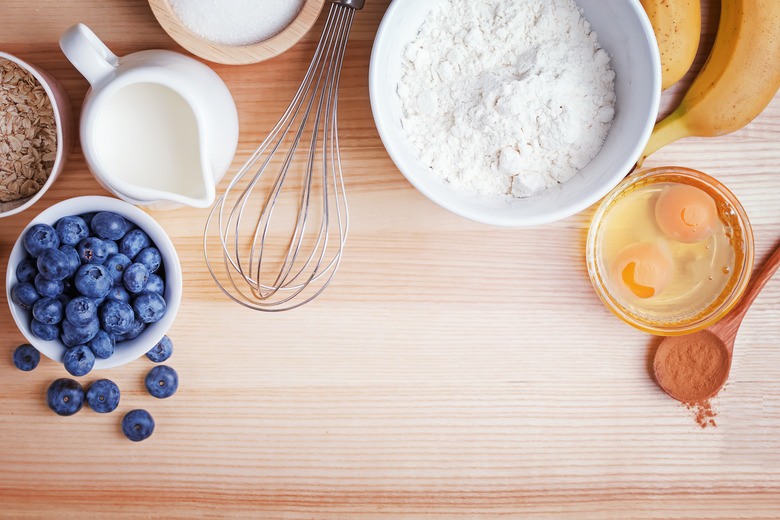Substitutes For Electric Mixers
You may have gathered all the ingredients and read through the recipe instructions, but all that is for nothing if the mixer is missing or otherwise not available to whip your dish into deliciousness. If your mixer fails or the whisks are missing in action, then there are a few ways to still create that dish without the use of an electric mixer.
A good hand mixer substitute will do all the work of an electric mixer without the muscle and hassle required to get a good batter or dough. Use the proper techniques and tools to ensure that the ingredients get mixed correctly.
Hand Mixer Substitute
A hand blender for cake batter does a great job at quickly incorporating cold butter into piles of fluffy flour for cakes, muffins and other baked goods. However, making a cake without a mixer can be done just as well with a few items from the cutlery drawer.
Fine Cooking notes that the point of beating or creaming ingredients is to aerate the butter, cream, eggs and other items to create a light and fluffy consistency. You can cut in butter with a pastry cutter or with forks if you don't have a mixer or food processor to break up the cold fat into the dry ingredients.
You can also use two table knives to cross-cut into the ice-cold butter and flour mix. Try to cut crosswise quickly so that the butter doesn't warm up and make the flour sticky. Don't over mix, which can also warm the butter and change the mix to a mud-like consistency.
Whisks as a Mixer Substitute
Whisks come in many shapes and forms; From mini whisks ideal for quickly mixing spices into hot drinks or the ingredients for a dry rub to large wire versions perfect for whisking cake batter, a whisk can quickly complete a culinary creation. The secret is in how you use the whisk.
A small whisk works well for little jobs, such as combining ground spices for a dry meat rub or whipping medicines or tinctures into hot or cold beverages. Larger whisks can handle thicker doughs and batters.
Stainless steel whisks work well for eggs, hot sauces and when you need to incorporate fats and flours or shredded protein. A plastic or silicone whisk is ideal for most jobs but might not stand up as well as stainless steel for truly thick batters. They are preferred for use in nonstick pans for thickening sauces as well as delicate dishes, according to Serious Eats.
How to Use a Whisk
The whisk will do a lot of the hard work, but you can wear out your wrist if you are working the kitchen tool incorrectly.
The best way to use a whisk as a hand mixer substitute with your ingredients is to swoop down to the bottom of the full bowl and lift upward. This looping method will incorporate all of the ingredients together. Hold the bowl as you whisk to ensure that the ingredients don't find their way all over the kitchen.
When working with wet ingredients, such as beating eggs into cream, start slowly and build up to a faster speed. Don't use the whisk for too long with eggs or you may overbeat the whites.
